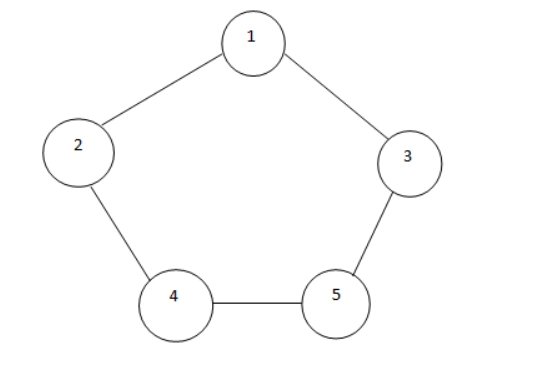🔁Quick BFS Recap
- In Breadth-First Search (BFS), you explore the graph level by level.
- You visit all immediate neighbors first, then move on to their neighbors, and so on.
- Uses a queue (FIFO)
- Best for shortest path in unweighted graphs
- Real-life: friend suggestions, web crawling, peer-to-peer networks
Now, Let’s Dive into DFS – Depth-First Search
- No more level-by-level. It’s time to go DEEP!
- In DFS, you pick a path and go as deep as possible, only backtracking when there’s nowhere left to go.
Let's Imagine this,
You enter a maze and just keep walking forward till you hit a dead-end, then backtrack and explore the next path.
It Uses recursion or a stack and best for the Exploring complete paths, Detecting cycles, Maze solving, Topological sort.
What is DFS?
Depth-First Search (DFS) is a classic graph traversal algorithm.
Instead of exploring layer by layer like BFS, it dives deep into each branch of a graph or tree before backtracking.
How It Works:
1.Start from a source node
- Choose a node to begin with (say, node 0).
- This will be the root of your traversal.
2.Use a stack (or recursion) to track the path
- DFS relies on a stack data structure.
- You can either explicitly use a stack or let recursion handle it for you (since function calls internally use a call stack).
3.Maintain a visited[] array
- To avoid infinite loops (especially in cyclic graphs), keep track of nodes you’ve already visited.
- This ensures each node is processed only once.
4.Process nodes deeply before backtracking
- Visit the current node and mark it as visited.
- Then, move to its first unvisited neighbor.
- Continue this process until there are no unvisited neighbors left.
- When stuck, backtrack to the most recent node that still has unvisited neighbors, and repeat.
🧠 Graph Structure (Adjacency List based on the image):
From the graph:
1: [2, 3]
2: [1, 4]
3: [1, 5]
4: [2, 5]
5: [3, 4]
We’ll assume:
It’s an undirected graph.
Step 1
- Start DFS at 1.
- Mark 1 as visited → Visited = [1].
- Explore first neighbor → 2.
Step 2
- At node 2.
- Mark 2 as visited → Visited = [1, 2].
- Explore first neighbor → 4.
Step 3
- At node 4.
- Mark 4 as visited → Visited = [1, 2, 4].
- Neighbors of 4 = (2, 5).
- 2 already visited → skip.
- Move to neighbor 5.
Step 4
- At node 5.
- Mark 5 as visited → Visited = [1, 2, 4, 5].
- Neighbors of 5 = (3, 4).
- 4 already visited → skip.
- Next is 3.
Step 5
- At node 3.
- Mark 3 as visited → Visited = [1, 2, 4, 5, 3].
- Neighbors of 3 = (1, 5). Both already visited → backtrack.
Step-by-Step (Recursive DFS)
Start at 1, mark visited → dfs = [1]
Go to neighbor 2 (first unvisited of 1) → dfs = [1, 2]
Go to neighbor 4 (from 2) → dfs = [1, 2, 4]
Go to neighbor 5 (from 4) → dfs = [1, 2, 4, 5]
Go to neighbor 3 (from 5) → dfs = [1, 2, 4, 5, 3]
All neighbors visited. Backtrack until all paths are done.
🔄 Final DFS Traversal Order:
1 → 2 → 4 → 5 → 3
DFS Code in C++
#include <iostream>
#include <vector>
using namespace std;
// Helper method to perform DFS recursively
void dfsHelper(int node, vector<int> adj[], vector<bool>& visited, vector<int>& dfs) {
visited[node] = true;
dfs.push_back(node);
for (int neighbor : adj[node]) {
if (!visited[neighbor]) {
dfsHelper(neighbor, adj, visited, dfs);
}
}
}
// DFS function that calls the helper
vector<int> dfsOfGraph(int V, vector<int> adj[]) {
vector<int> dfs;
vector<bool> visited(V, false);
dfsHelper(0, adj, visited, dfs); // starting from node 0
return dfs;
}
int main() {
int V = 5;
vector<int> adj[V];
// 1-2, 1-3, 2-4, 3-5, 4-5
adj[0] = {1, 2}; // node 1 -> 2, 3
adj[1] = {0, 3}; // node 2 -> 1, 4
adj[2] = {0, 4}; // node 3 -> 1, 5
adj[3] = {1, 4}; // node 4 -> 2, 5
adj[4] = {2, 3}; // node 5 -> 3, 4
vector<int> result = dfsOfGraph(V, adj);
cout << "DFS Traversal: ";
for (int node : result)
cout << node + 1 << " ";
cout << endl;
return 0;
}
⏱ Time Complexity → O(V + E)
-
V (Vertices):
- Every vertex is visited exactly once.
- Visiting a node + marking as visited = O(1) each → overall O(V).
-
E (Edges):
- For every node, DFS explores its adjacency list (all connected edges).
- Across the whole graph, each edge is checked at most twice (once from each endpoint in an undirected graph, once in a directed graph).
- Total edge exploration = O(E).
So, the total time = O(V + E).
Space Complexity → O(V)
DFS requires memory for:
- Visited array → To keep track of visited nodes (size = V).
- Recursion stack (or explicit stack) →
- In the worst case (graph shaped like a linked list), recursion depth can go up to V.
So, maximum call stack size = O(V).








Top comments (0)